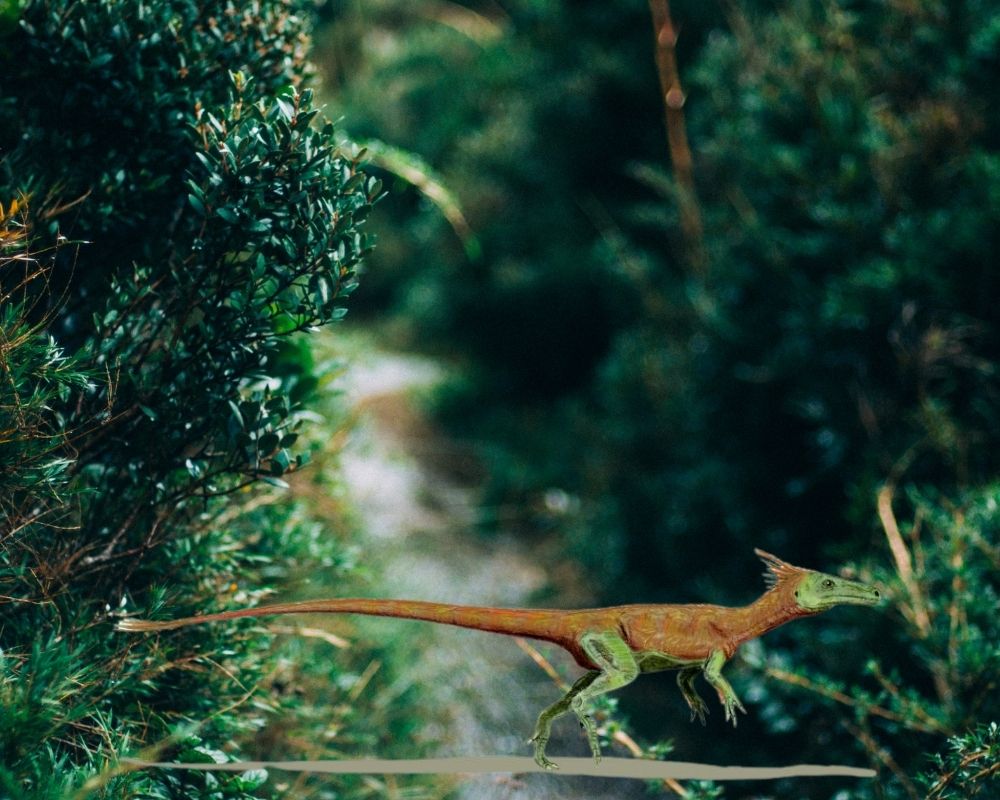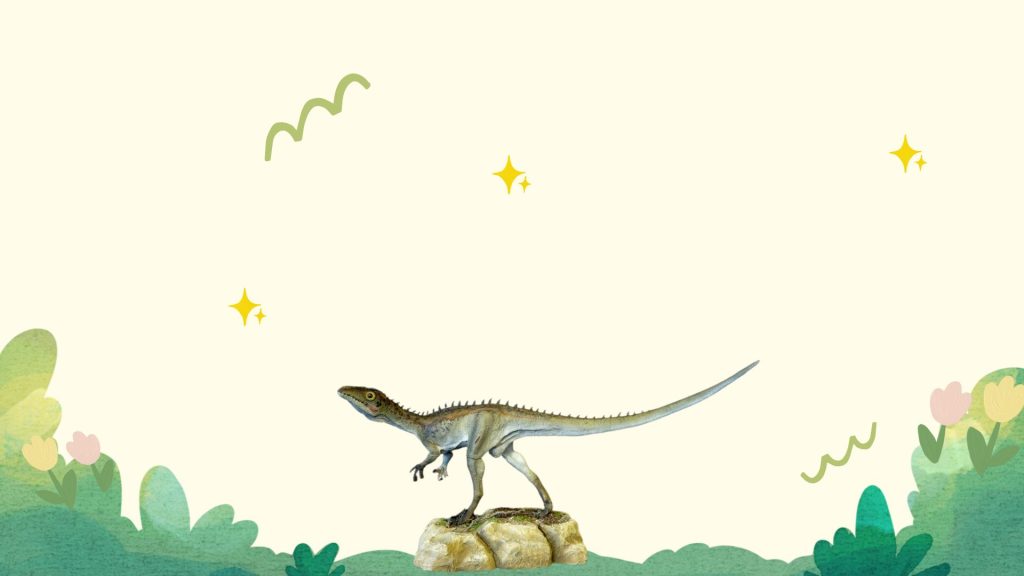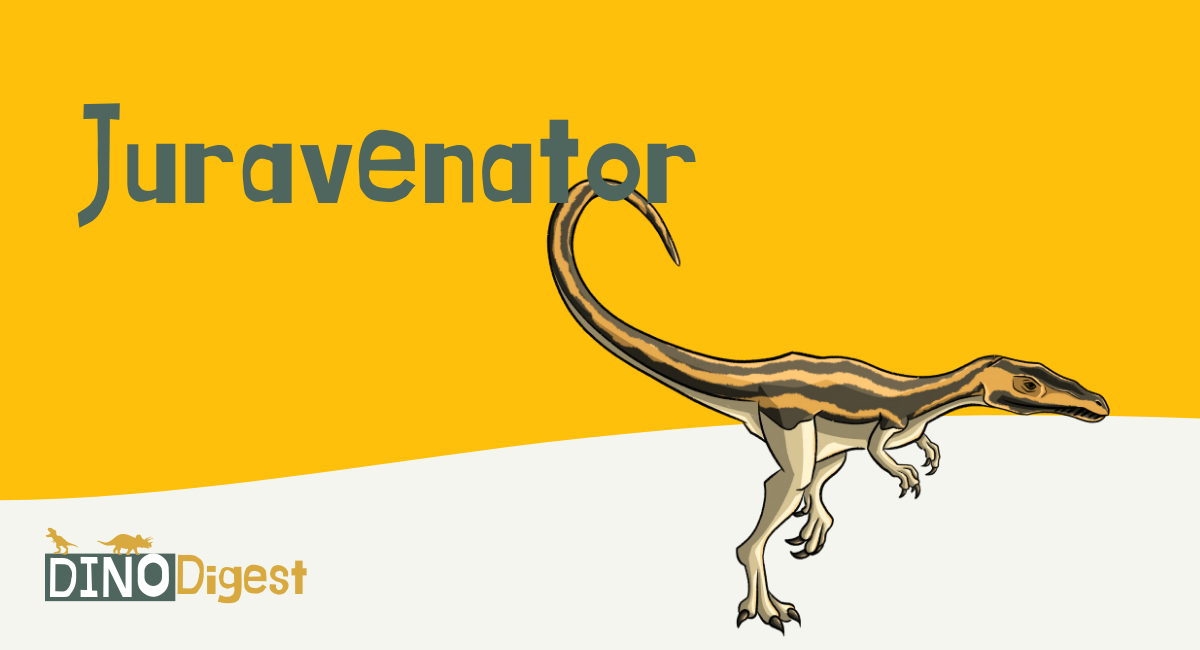Have you ever seen a dino this tiny? The Juravenator was a dinosaur from Germany that was discovered not so long ago. Scientists still argue about its skin covering, but it might have had sensory organs in its skin!
Table of Contents
Some Quick Facts about the Juravenator

| Name | Juravenator (means “hunter from the Jura mountains”) |
| Type of dinosaur | Theropod |
| Territory | Arid islands with small trees and bushes, Germany |
| Size | Small, 2.46 feet long |
| Color | Likely greenish |
| Interesting Characteristics | Rectangular head, long teeth, and deep snout |
| Diet | Carnivore (Archaeopteryx, fish, and larger animals) |
| Major Threats | Floods and bigger dinosaurs |
The Juravenator was a tiny theropod dinosaur that lived in the Late Jurassic of Germany. It belongs to the Coelurosauria family, a group of bird-like dinos, but it sure wasn’t a bird. Its fossil shows it was the best non-avian predator found in Europe.
Where Did the Juravenator Live?
The Juravenator lived on islands covered in bushes and small trees. Two brothers, Klausdieter and Hans-Joachim Weiss excavated its fossil in a collecting program by the Jura Museum Eichstätt in 1988.
The fossil was in the Franz Stark Quarry in the Schamhaupten district of Eichstätt in southern Germany. Ursula Göhlich and Luis Chiappe described and named this dino. The name means “hunter from the Jura mountains” since the Juravenator lived where these mountains are now.
It lived near the Compsognathus, a birdy dino. They hunted the same prey, Archaeopteryx, known as the first bird.
What Is Another Name for the Juravenator?
The fossil of the Juravenator gained the nickname “Borsti,” which means bristle because people thought it had protofeathers. Paleontologists still don’t know if it was a feathered dinosaur with scales in different parts of its body or not.
Paleontologist H. Tischlinger took some ultraviolet light photos of the fossil that showed filaments that look like primitive feathers. This is weird because non-avian theropod dinos with both feathers and scales have not been found.
Was the Juravenator a Carnivore or Herbivore?
Juravenators were carnivores. This small theropod enjoyed eating bigger animals. Scientists know this because it had large teeth. It hunted the Archaeopteryx, fish, and other animals.
What Did the Juravenator Look Like?

The anatomy of Juravenator starki is different first because of its size. It was a compsognathid, a group of small bird-like carnivores.
It had long teeth with little serration and a subrectangular head with a deep snout. This dino probably had scales on its tails and legs and protofeathers on the rest of its body.
Paleontologists only found one specimen of the Juravenator starki, the only species of this group. The specimen is of a young dino. Its name J. starki is in honor of the Stark family who owned the quarry where it was found.
New research shows that its scales may have been sensory organs in the outer layer of the body! Crocodiles have these, but it would be the first-time scientists find them in a dinosaur.
5 Fun facts about Juravenator
- This dino weighted only 17.6 oz (500 g)
- The name pronounced as ‘ju-rah-ve-nay-tor’
- Juravenator was always looking for new hunting grounds
- It had a rounded belly
- It had skaly skin and feathers

